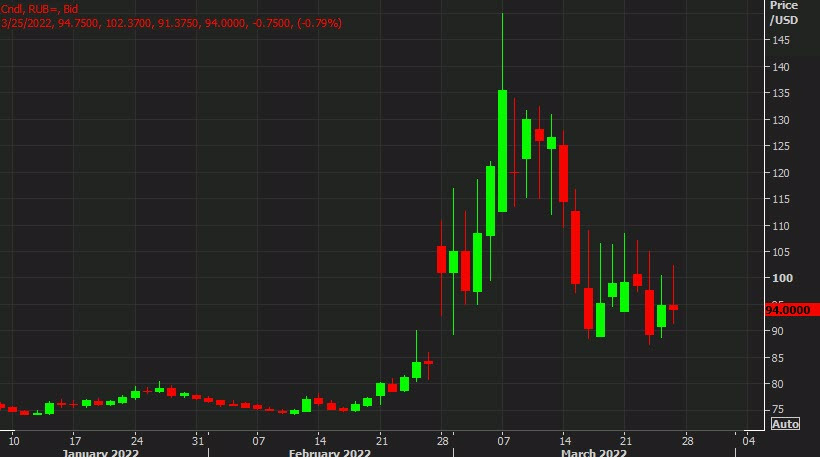Putin put a squeeze on ruble shorts this week by demanding that payments for Russian oil and gas from ‘unfriendly countries’ be settled in rubles.
That led to a 10% rally in the ruble on Wednesday and its held on to two-thirds of those gains.
The question now is whether it happens (not likely) and what Russia does in response (much tougher to guess).
Europeans have given strong indications that they won’t pay in rubles. They note that the contracts call for payment in dollars or euros and feel they don’t need to change course. Even if they wanted to pay in rubles, they would be hard to secure.
So maybe Putin is making a hollow threat.
This week we’ll find out. If Europe refuses to pay in rubles, Russia has hinted that it could hold them in default on payments. That’s a stretch but it’s not like we’re exactly operating within global norms.
If that’s the case, perhaps Putin would have a pretext to cut off supplies altogether? That would be incredibly damaging to Russia domestically but it would also inflict heavy pain on European industry along with energy consumers. It would mark a dramatic escalation in the economic war.
What makes me think it’s a higher possibility than most believe is that today, Russian foreign minister Sergey Lavrov said the west had declared total war on Russia in light on sanctions. This might be their way of returning the favor.
The US is talking about increasing LNG supplies but there aren’t any supplies available for years. Anything that’s delivered to Europe will have to be redirected away from somewhere else, likely Asia.
Here’s a look at European benchmark TTF gas prices:
